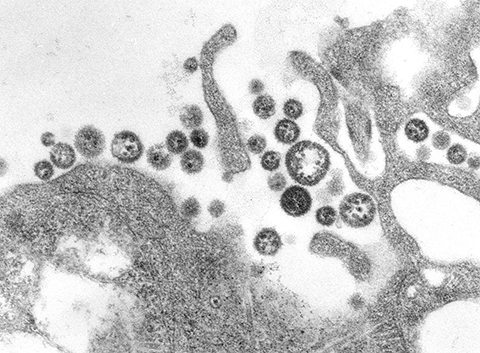Scientists create antibody ‘cocktail’ to fight deadly Lassa virus
Antibodies are a crucial ingredient in preventing infection for a wide variety of viruses. Scientists are frequently looking for new antibodies that could help fight viral infections. One deadly virus, the Lassa virus, infects hundreds of thousands of people annually, predominantly in Africa, causing its namesake: Lassa fever. There is as yet no approved vaccine or therapeutic against Lassa fever.
Now, however, scientists have identified three major monoclonal antibodies — artificial proteins that act like antibodies in the immune system — that can be used to potentially form the basis of a new vaccine that could save tens of thousands of lives a year.

The research team was led by Erica Ollmann Saphire, the president and CEO of the La Jolla Institute for Immunology, an organization dedicated to understanding and combating infectious diseases. Researchers from LJI used the bright X-ray beams produced by the Advanced Photon Source (APS), a U.S. Department of Energy (DOE) Office of Science user facility at DOE’s Argonne National Laboratory, to characterize three antibodies that target the Lassa virus’s protein structure. The antibodies were isolated from survivors of the disease.
The result is a culmination of a 17-year project to look at the action of the Lassa virus and try to create a suite of biological molecules that could inhibit the virus’s ability to infect human cells.
“These antibodies are protective, but people weren’t sure why they were protective,” said Haoyang Li, a researcher at LJI and the first author on a paper based on the study. “The work done at the APS allowed us to see what was happening on a molecular level.”
“People may be familiar with monoclonal antibodies as a treatment for viruses such as the virus that causes COVID-19, but these kinds of antibodies can have positive effects on other viruses as well, like Lassa,” added Argonne physicist Naga Venugopalan.
According to Li, viruses such as Lassa are enveloped by a substance called glycoprotein. This glycoprotein is in turn equipped with a “glycan shield” made of carbohydrate molecules that typically both protects the virus from antibody attack and enables it to infect cells.
“Normally, antibodies cannot find a way to get through the glycan shield to get access to the protein to destroy the virus, but in our research we found that some of the antibodies could actually exploit the shield itself to reach the glycoprotein and neutralize the virus,” Li said.
The researchers strove to identify the virus’s weak spots, and they found that the most effective approach involved the use of a “cocktail” of the three antibodies to neutralize the virus. The antibody cocktail has been tested in nonhuman primates but is still awaiting federal approval for further study in humans. In the meantime, the researchers were interested in more fully understanding how the antibodies worked.
To do so, they used a combination of cryo-electron microscopy (cryo-EM) technology provided by LJI, and X-ray crystallography with X-rays provided by the APS. Partial structures of the three different antibodies and interaction of the glycoprotein complex with one of the antibodies were determined by X-ray crystallography. This information was used as an initial model when helping to fill out the atomic maps produced by the cryo-EM.
“X-ray crystallography provides us with a way to see the finer details of interactions between two proteins, namely, the side chain interactions,” Venugopalan said. “Information obtained from X-ray crystallography provides better clarity when fitting cryo-electron density maps.”
The ultimate goal would be to develop a vaccine that could drive the body into producing these antibodies naturally. “Because each of these antibodies in the cocktail can simultaneously bind to the glycoprotein, it creates the potential for a more effective treatment against Lassa virus than we have had to date.” Venugopalan said.
This article was first published by Argonne National Laboratory. Read the original.
Enjoy reading ASBMB Today?
Become a member to receive the print edition monthly and the digital edition weekly.
Learn moreGet the latest from ASBMB Today
Enter your email address, and we’ll send you a weekly email with recent articles, interviews and more.
Latest in Science
Science highlights or most popular articles

Decoding microglial language
Emory University scientists characterize extracellular vesicles that facilitate intercellular communication.

What is metabolism?
A biochemist explains how different people convert energy differently – and why that matters for your health.

What’s next in the Ozempic era?
Diabetes, weight loss and now heart health: A new family of drugs is changing the way scientists are thinking about obesity — and more uses are on the horizon.

How a gene spurs tooth development
University of Iowa researchers find a clue in a rare genetic disorder’s missing chromosome.

New class of antimicrobials discovered in soil bacteria
Scientists have mined Streptomyces for antibiotics for nearly a century, but the newly identified umbrella toxin escaped notice.

New study finds potential targets at chromosome ends for degenerative disease prevention
UC Santa Cruz inventors of nanopore sequencing hail innovative use of their revolutionary genetic-reading technique.

